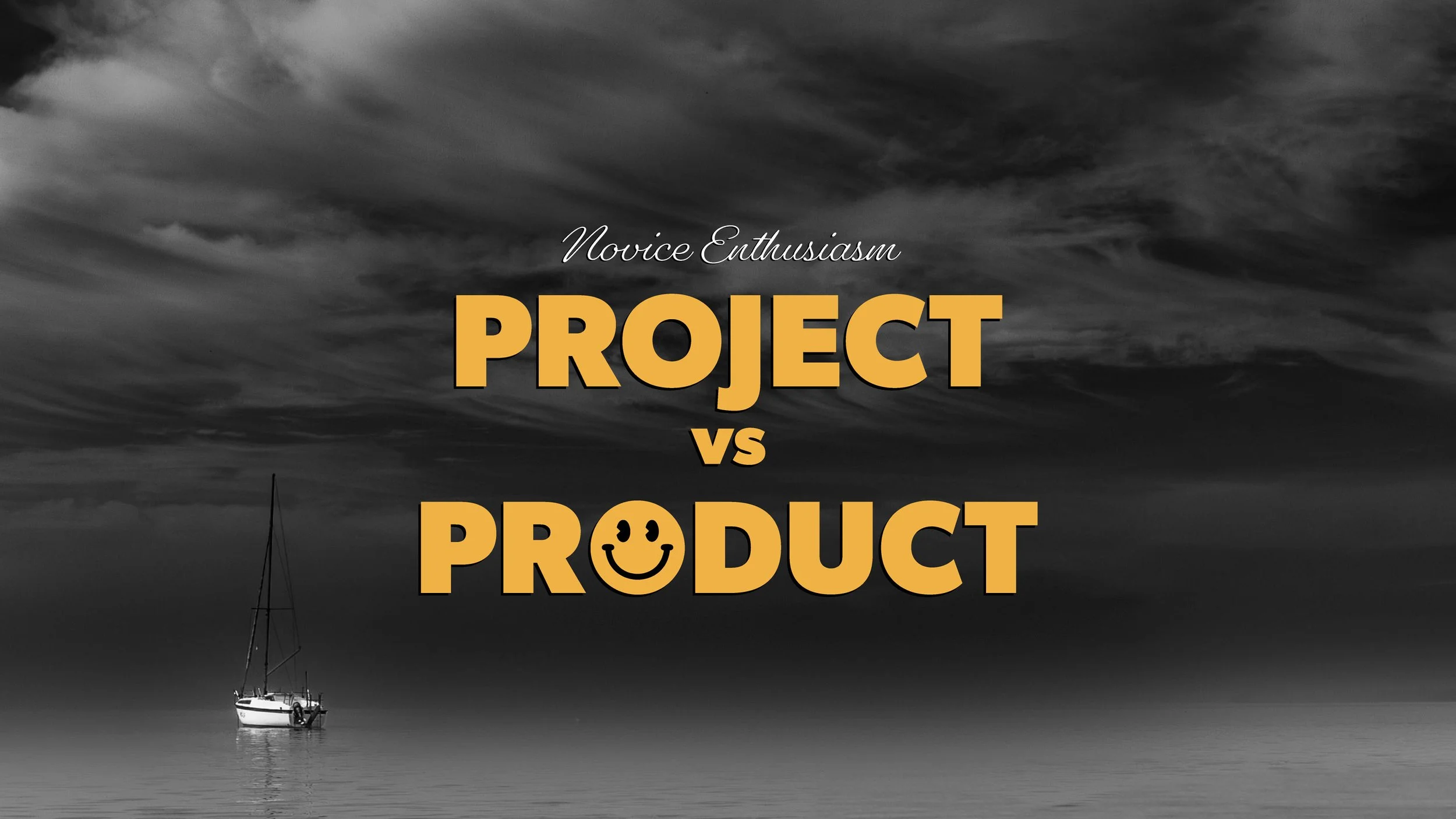Novice Enthusiasm: Project vs Product
In my earlier post, The Artist and The Algorithm, I mentioned Kintsugi for the first time. In my opinion, it’s been the most meaningful work I’ve done as an artist . It began with a few sketches and written scenes that slowly grew into something a lot bigger. As it continues to grow, it becomes more difficult to guide it. The novice in me has started to freak out a little.
But things shifted when I stopped thinking of Kintsugi as a project. From the start, I knew where I wanted it to go, but I didn’t know exactly how to get it there. The goal was clear, but the course was foggy. It felt a little like setting sail with a partial map and a faint outline of land in the distance. A project with limited structure is like a boat without a sail or a rudder. It may look ready for adventure out on the open sea, but it tends to drift wherever the current takes it. Each new idea hits like a wave against the hull, demanding attention but offering little in the way of progress. It started to feel like I was spending the majority of my time patching leaks and shifting weight around the deck, but not moving any closer to shore.
A project like that will keep you busy. It will keep you from getting bored. But it will also consume you.
Personally, I think an artist should be consumed by their work. But when obsession replaces navigation, the voyage gets a little chaotic. The first step to getting back on course is communication, whether that means talking with your crew or having an honest conversation with yourself. But what happens when communication breaks down? How do you steer when you’ve lost sight of where you were headed?
That’s where language becomes important. Calling something a “project” gives it permission to drift. Calling it a “product” gives it a destination. A project floats wherever the elements push it. A product knows where it’s going.
A product is a boat with a sail and a rudder. It allows you to catch the wind of inspiration and use it with purpose. You still feel the waves and the pressure of new ideas, but now you can steer. You can navigate. You can correct your course when the current shifts. The work no longer controls you. You control how far it goes and where it lands.
If you aren’t sailing alone, the responsibility grows. When you have a team of artists, producers, or collaborators, you’re no longer steering just for yourself. You are responsible for the passengers on board. Every decision you make affects their trust, their focus, and their belief in the journey. If the ship drifts for too long, people lose faith. When you steer with clarity, they find rhythm in your direction. Turning a project into a product means accepting that responsibility. It means setting a course not only for yourself but for everyone who believed enough to climb aboard.
When I began thinking of Kintsugi as a product, I could see the shore again. I could make decisions that move Kintsugi closer to completion instead of floating. A project has an ever-growing scope. A product has a finish line. A project serves one person. A product serves many.
When a project starts to take shape and begins to speak to others instead of only to you, that’s when it shows potential to become a product. That shift brings a new kind of responsibility. A project exists to satisfy curiosity. A product asks you to deliver. Once your work leaves the harbor, you’re accountable for how it sails. You have to read the weather, adjust the sails, and keep your crew aligned. Eventually, an audience becomes part of the journey, and your choices shape how they experience it.
That responsibility can feel pretty heavy at first, but it sharpens your instincts. It teaches you how to steer through storms, how to avoid the dreaded sandbars of overthinking, and how to recognize when it’s time to bring the work home. A project lets you drift. A product makes you a navigator. One keeps you afloat. The other takes you somewhere.
Honestly, as I was writing this, talking about turning Kintsugi into a product felt a little… gross. But finding a way to monetize something beautiful and personal isn’t about betraying the magic that started it. It’s about learning how to guide it toward something that can live beyond me. Every artist finds themselves adrift at some point, surrounded by waves of ideas. The key is to keep your hand on the wheel and trust that the shore is still there, even when you can’t see it. The act of choosing direction over drift, is what transforms uncertainty into progress. Keep going. Every decision you make brings the work closer to land.
About the Author
Sean Miller is a producer and visual designer with over a decade of experience in games, comics, and branding. He has led creative production for companies like Zynga, Yuga Labs, and Sephora. He’s created original IP for publishing, gaming, and film.
He is the creator of Novice Enthusiasm, a creative philosophy that champions curiosity, empathy, and story over perfectionism. His approach helps teams align around vision, move quickly from concept to production without losing the human element that makes art connect.
If you’re looking for someone who can bring clarity, visual direction, and story-driven focus to your team, Sean is available for consulting and creative leadership.

